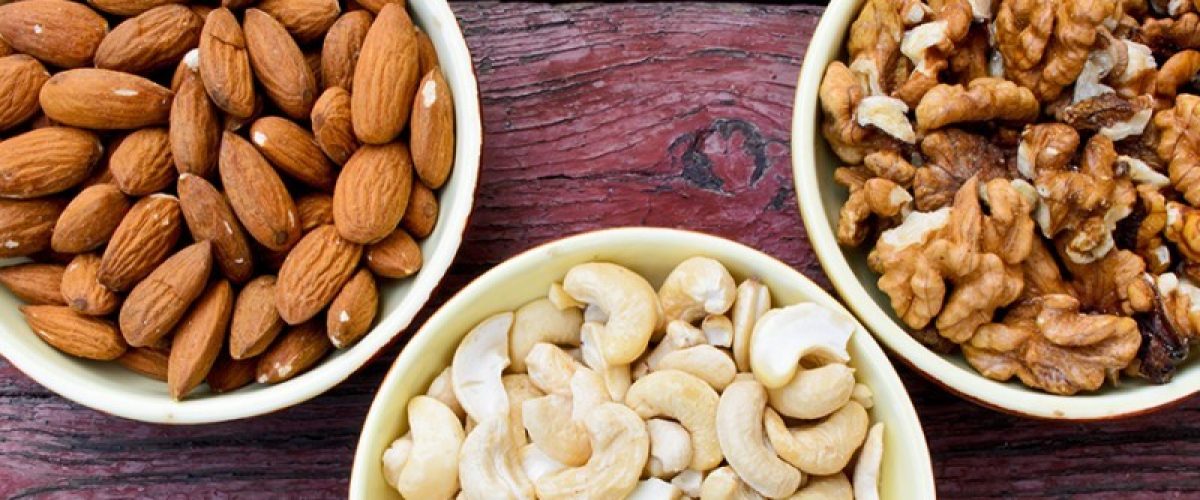What nuts are diabetic friendly?

With a low glycemic index, nuts are diabetic friendly foods
If you have been diagnosed with diabetes, it is important to be mindful about eating diabetic friendly foods. Nuts, in general, tend to be diabetic-friendly, as they have a low glycemic index; however, there are specific nuts that rank particularly high for being diabetic friendly.
Some symptoms of diabetes
Increased thirst
Increased hunger (even after eating)
Dry mouth
Frequent urination
Unexplained weight loss
Fatigue
Blurred vision
Headaches
If you are not sure if you have diabetes you may want to see if you are experiencing the main symptoms of diabetes.
If you are experiencing any of the main symptoms of diabetes, be sure to consult with your physician for further evaluation. Just like with many other health conditions, diabetes can be managed in part with the foods you choose to include in your diet.
Nuts are known to be heart-healthy and be beneficial to those who have diabetes or are pre-diabetic. To derive the most health benefits from nuts, they are best eaten in the raw form with no added sugars, honey, chocolate or yogurt. These add-ons increase the sugar and carbohydrate content, shifting them from low-glycemic-index options to foods that are no longer considered diabetic friendly.
There have been several research studies done on the potential benefits of adding different nuts to people’s diets to help manage their diabetes. There was a study published in Diabetes Care in 2011 that found that people with type 2 diabetes experienced increased energy after adding 2 ounces of mixed nuts daily, compared to a control group that did not. Moreover, the experimental group also showed decreases in both their blood sugar and bad cholesterol levels in response to eating nuts throughout the study.
Three nuts that are diabetic friendly
CASHEWS
Although many believe the contrary, cashews are lower in fat than most other nuts. Seventy-five percent of the fat you find in cashews is oleic acid, also known as healthy monounsaturated fat. This is the same type of fat you will find in olive oil and coconuts. When monounsaturated fats are combined with a low-fat diet, these fats help reduce the high triglyceride levels or blood fat levels in people who may have diabetes. Based off an animal study that was done in 2005 and published in the Journal of Herbal Pharmacotherapy, cashew nuts were highlighted as potentially offering anti-hyperglycemic benefits, making them very diabetic friendly.
ALMONDS
According to a study published in the Journal of Nutrition in 2006, researchers fed 15 subjects five healthy meals. Two were control meals whereas the other three were experimental meals consisting of almonds, bread, boiled rice and instant mashed potatoes. Blood samples were collected pre-meal and 4 hours post-meal. The results showed that the almonds lowered the rise in blood sugar and insulin 4 hours after eating. Other research has supported these findings, showing that almonds can be crucial in helping people manage their blood sugar levels after eating, even when eaten alongside foods that have higher levels of sugars and carbohydrates.
WALNUTS
Walnuts are another diabetic-friendly nut according to research. In December 2004 in Diabetes Care, researchers found that including 1 ounce of walnuts in the diet of patients with type 2 diabetes resulted in significant improvements in their cholesterol profile and thus reduced the risk of heart disease. There were fifty-eight men and women around the age of 59 who were assigned to one of three diet plans: a traditional low-fat diet, a modified low-fat diet and a modified low-fat diet that included one ounce of walnuts a day. Each plan had meals with 30 percent of total calories from fat. Results showed that those that were on the low-fat walnut diet had a better HDL to total cholesterol ratio than the other groups six months later. They also showed a 10 percent drop in LDL or bad cholesterol levels.
Clearly, there is not a single best nut for diabetes; rather, different nuts have been found to manage different symptoms of diabetes and support healthy functioning. Studies also indicate that carrying a diagnosis of diabetes does not mean that you can’t ever have fatty foods in your diet. Instead, it simply becomes more important to manage your sources of fats, making sure that you are primarily eating healthy fatty foods> like nuts. A good place to start is including those nuts highlighted above.
Make sure to stick to a diabetic-friendly diet and add in the best nuts for diabetes into your diet with moderation. Don’t be afraid of healthy fats—just keep healthy fatty foods in your diet and stay clear of processed fatty foods. Pay close attention to the glycemic index of foods and stick to the ones that have a low glycemic index. Make sure that if you are experiencing symptoms of diabetes to consult with a physician or other treatment provider to learn what other steps you can take to improve your health.
Written by Lisa Saremi
